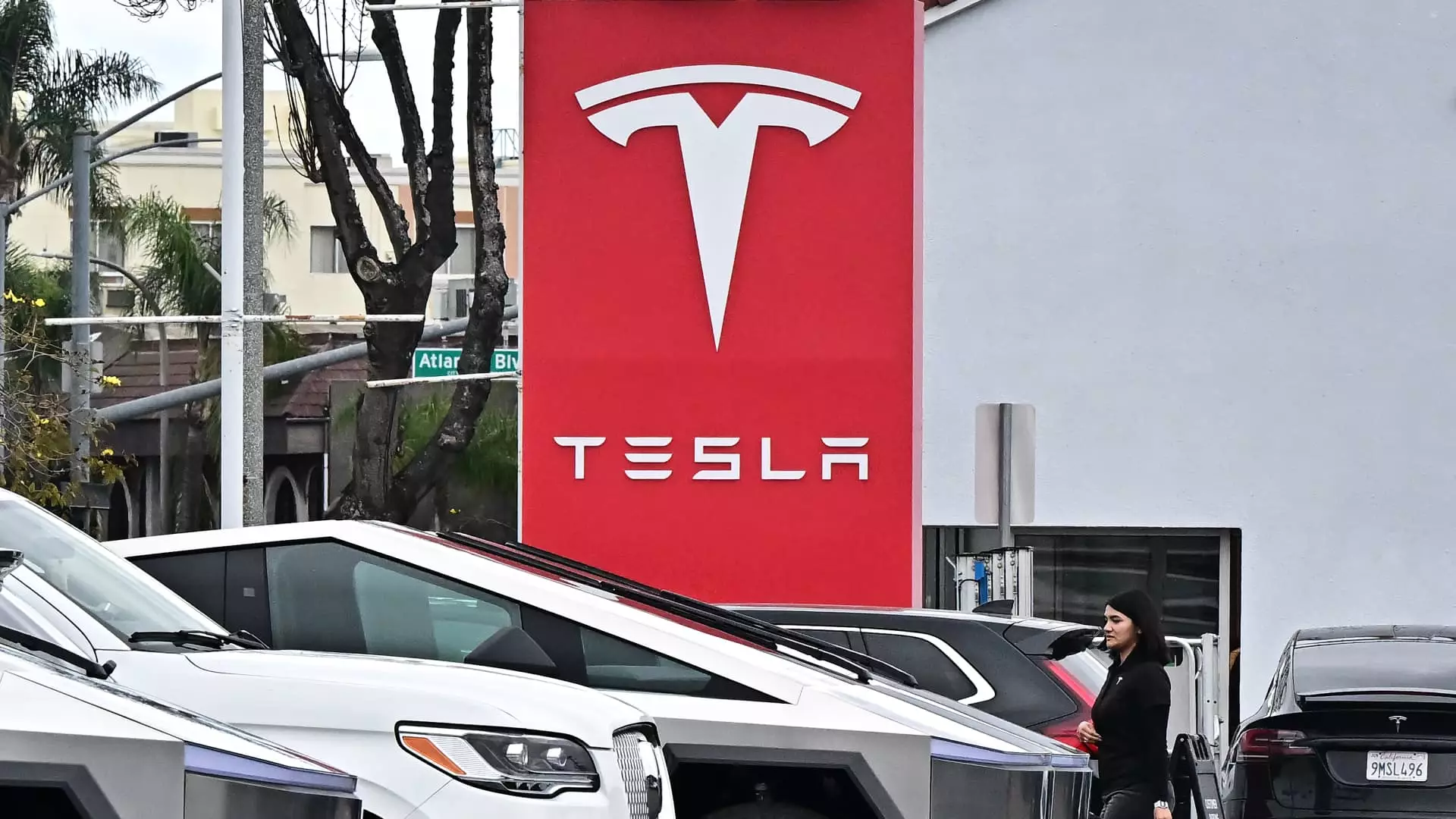When Tesla burst onto the scene as the darling of the electric vehicle (EV) industry, it set a precedent that revolutionized how consumers perceive automobiles. However, the excitement surrounding the electric vehicle market seems to be dimming. With the escalating trade tensions and an uncertain economic outlook, analysts from prominent Wall Street firms have issued stark warnings about the company’s future, leading to major price target cuts that have caught the attention of investors. As a self-proclaimed Tesla enthusiast, I can’t help but view these predictions not just as numbers on a spreadsheet but as a signal that the entire landscape of the automotive world is shifting under our feet.
Recently, Goldman Sachs, UBS, and Mizuho have each lowered their price targets for Tesla significantly. UBS, for instance, marked a downgrade that suggests a bleak 30% downside from its current position. Such drastic revisions reflect more than just analyst pessimism; they signify larger economic forces at play that could fundamentally alter how we think about EVs.
Elon Musk: An Uncertain Navigator in Troubled Waters
Amid intensifying scrutiny of his leadership style and business decisions, Elon Musk’s role as CEO has drawn both applause and criticism—especially within the context of the current political climate and trade dynamics. The fears surrounding dwindling consumer sentiment manifest not only in reduced demand for Teslas, but also in rising tariffs imposed on both auto and energy sectors. Analyst Joseph Spak makes a compelling point when he argues that the earnings trajectory for Tesla could be overly optimistic, especially with the looming threat of tariffs impacting the Tesla Energy division. While Musk has been a visionary, his bold leadership has also attracted detractors, suggesting that confidence in his stewardship may be faltering.
As a self-driving tech enthusiast, I am both excited and apprehensive about Tesla’s bold ventures into automating manufacturers. However, I can’t shake off the feeling that the race toward AI-enhanced driving technologies might be misaligned with the immediate market realities. As evidenced by the concurrent fears of a sluggish auto market, Tesla’s focus needs to realign if it is to sustain its competitive edge amidst rising production from competitors. The distinction between audacity and recklessness is becoming blurred in this tumultuous phase for Tesla.
The Market’s Response: A Bearish Outlook
Tesla enthusiasts may find it hard to swallow that the stock has plunged 33% this year, erasing much of its post-election rally. Analysts from Goldman Sachs and Mizuho articulate the unease permeating the market. While they recognize Tesla’s historical leadership in EVs, their reassessments reveal a much harsher reality—the company faces headwinds not just from other automakers but also from broader economic indicators.
For instance, with higher vehicle tariffs and increasing competition in both the European and Chinese markets, Tesla’s previously unassailable position is now in jeopardy. The sentiment that the automotive landscape is evolving—and not necessarily in Tesla’s favor—is hard to ignore. It raises questions: Can Tesla maintain its market dominance if consumer preferences shift or if significant trade barriers are imposed?
Mizuho’s Vijay Rakesh might still carry an optimistic overtone in his analysis, but let’s be real here: optimism without tangible results can be a fool’s errand. The electric vehicle market is becoming saturated, and as competitors ramp up production, their products are becoming increasingly attractive to consumers who might have been loyal to Tesla. When is enough, enough?
The Future: Is Tesla Still the King of EVs?
With analysts issuing such extravagant cautionary tales, the ultimate question emerges: what does the future hold for Tesla, a company once heralded as America’s auto industry savior? The electric vehicle battle is heating up, with new players and traditional automotive giants targeting Tesla’s market share. The company’s commitment to innovation remains evident, but innovation must converge with practical market strategies to ensure sustainability.
In an environment marked by rising costs, increasingly competitive alternatives, and unflagging scrutiny of its leadership, Tesla must adapt to the winds of change. For fans like myself, it’s a disheartening reality check. Tesla’s leadership must go beyond innovation and embrace the complexities of the modern economic climate or risk being outmaneuvered by those who can. The countdown has begun—can Tesla navigate its way through these turbulent waters, or are we witnessing the beginning of the end for its storied rise? The coming months will undoubtedly test not just Tesla but also the very fabric of what we consider to be the future of transportation.

